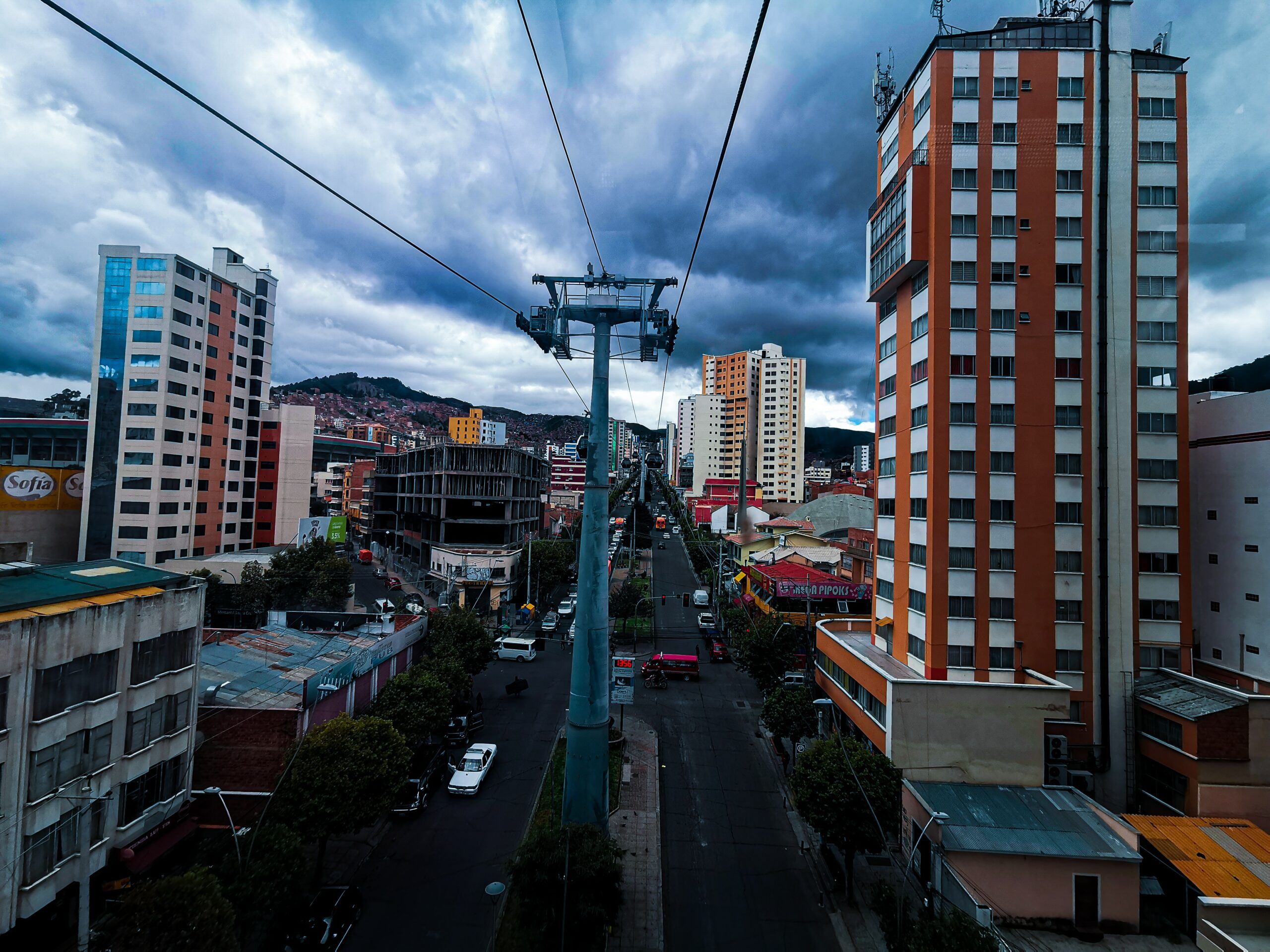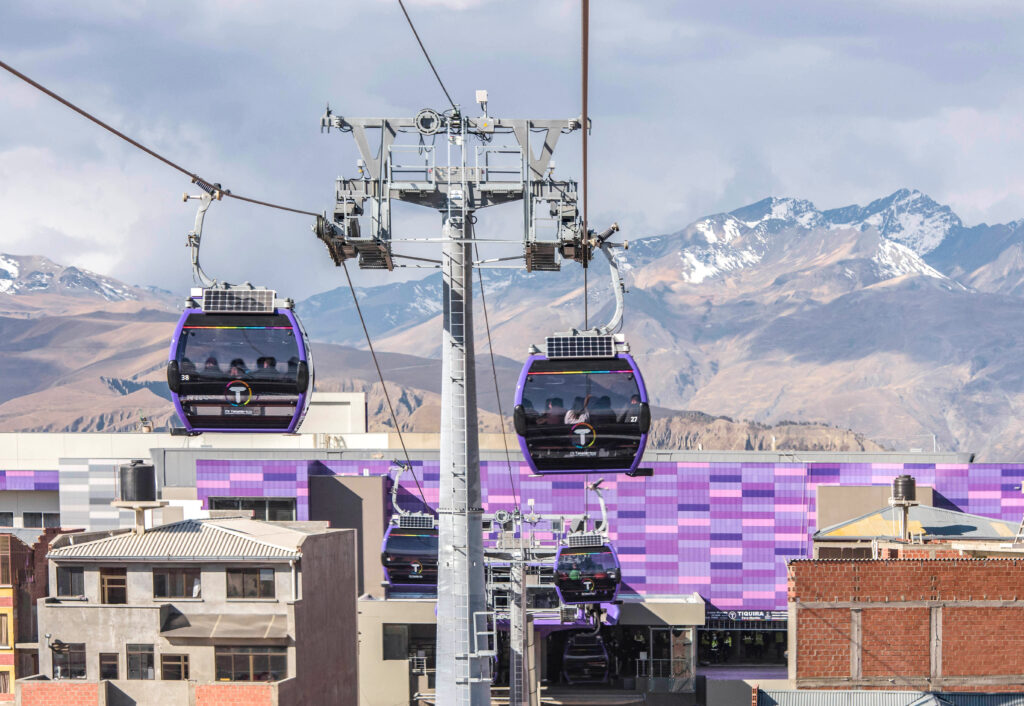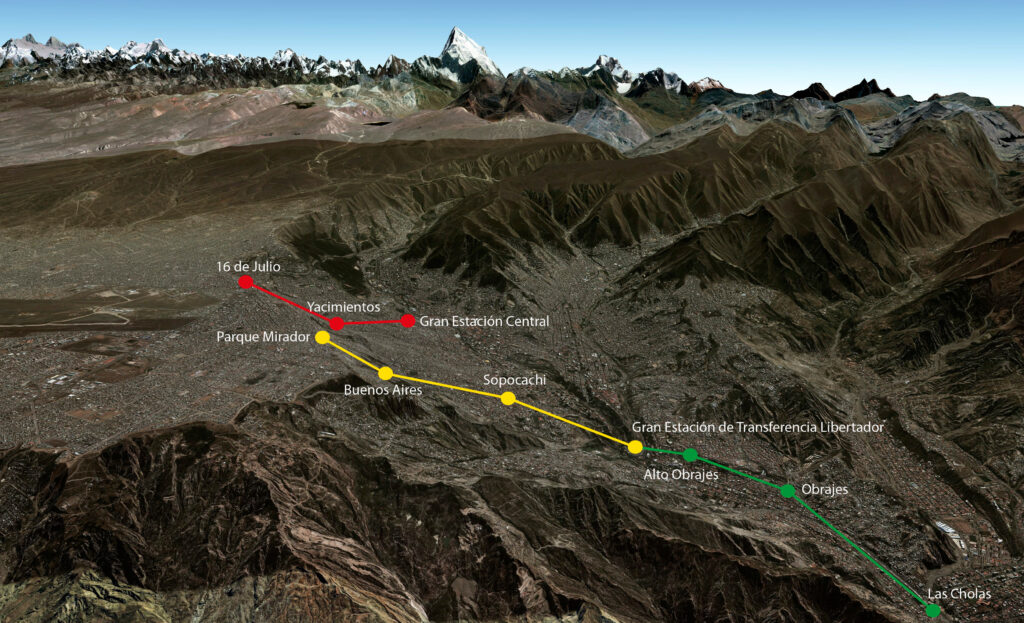
Cities, SI Urban 1/2023
One Cable Car, three dimensions
A comparison of the CO2 content of buses, streetcars and cable cars in operation is striking: The cable car is CO2 neutral. Only maintenance and servicing result in CO2 emissions of almost 50,000 tons of CO2 over a service life of 30 years. For traditional means of transport, these emissions are between 200,000 and 250,000 tons of CO2 . This is demonstrated by an observation of Vienna University of Technology.
Sustainable alternative
The urban cable car is a sustainable alternative to road transport. Photos: Doppelmayr

Compared with other local public transport systems in respect of ecological sustainability, the cable car is therefore presented as unbeatable and can definitely be considered an example of best practice. Moreover, in construction the cable car requires less space than the construction of a conventional tram route or a two-lane roadway.
The land usage for three cable cars, for example as implemented in La Paz, specifically takes up 53,132 square metres. By contrast, for a two-lane road that is 10 kilometres long and 12 metres wide, a surface area of around 120,000 square metres is sealed.
Other benefits include, according to Science Wall of the Vienna University of Technology, low noise pollution in comparison with the usual road traffic, low impact on air quality, and low energy consumption. Cable cars also relieve the strain on public transport, as they offer an alternative to private and road traffic. High levels of availability and reliability guarantee convenient transport.
Savety has improved.
Since the opening of the cable car lines in La Paz, safety has improved.

Value enhancement of the region
An urban cable car yields benefits not only for the environment but also financially. For example, it enhances the tourist value of the region both for local residents and for international tourists.
This can be seen from the example of the “Mi Teleférico” cable car system. The cable car is not only a part of the local transport but also a popular tourist destination in La Paz. During the period when it was being constructed in 2017, the number of tourists in La Paz grew significantly.
Considerable time saving
A ticket for the cable car is indeed more expensive on average than a ticket for public transport by road, but this is countered by the time saving. With the cable car constructed in La Paz, the population saves time – an average of 94 minutes or 15 days per person over the year.
The example of La Paz demonstrates the benefits of a cable car in the everyday life of the population. Rather than sitting in a traffic jam, you simply float above it. In combination with social facilities near a cable car station, the cable car becomes a social hub. It promotes social mixing, as the cable car is used as a means of transport by both rich and poor.
Among other things, it has given the indigenous population access to the labour market. According to the Vienna University of Technology, around 400,000 people use the cable car every day to commute from El Alto to La Paz.
Improved safety from cable cars
A further aspect of the urban cable car in La Paz is the decline in murders since the new cable car was constructed. As a hub in the city, the urban cable car improves safety. Public institutions are easier to access as a result of connection to the cable car network. In addition, health centres near cable car stations ensure healthcare provision in the district.
CONCLUSION
- Ecologically sustainable: The cable car emits no CO2 during operation. Only during maintenance is there a small level of CO2 emission.
- Socially sustainable: The urban cable car promotes the mixing of the population and increases safety in the neighborhood.
- Economically sustainable: Boarding and alighting for the spacious cabins with electric doors on both sides is at ground level.
- Space-saving: Compared with road construction, less area is sealed for a cable car.
- Time saving: The cable car avoids traffic jams and saves more than a week over the course of a year.
- Tourist attraction: The cable car enhances the region economically and culturally.







